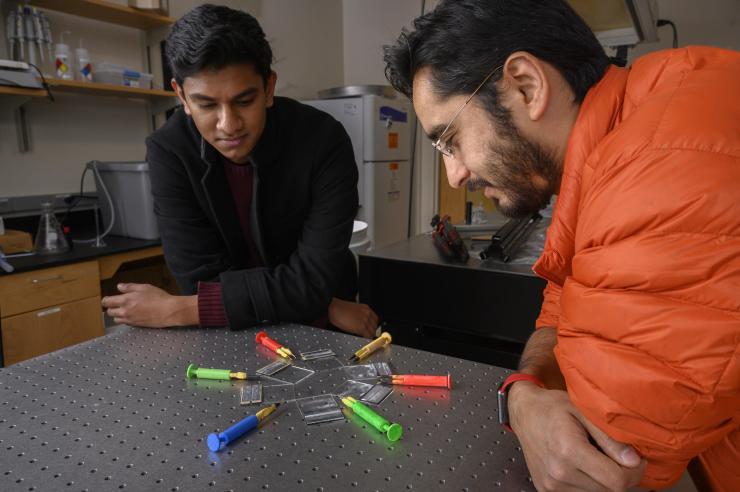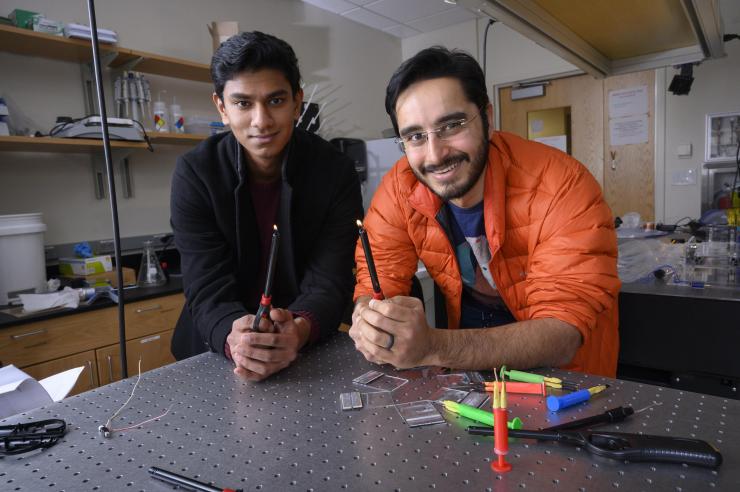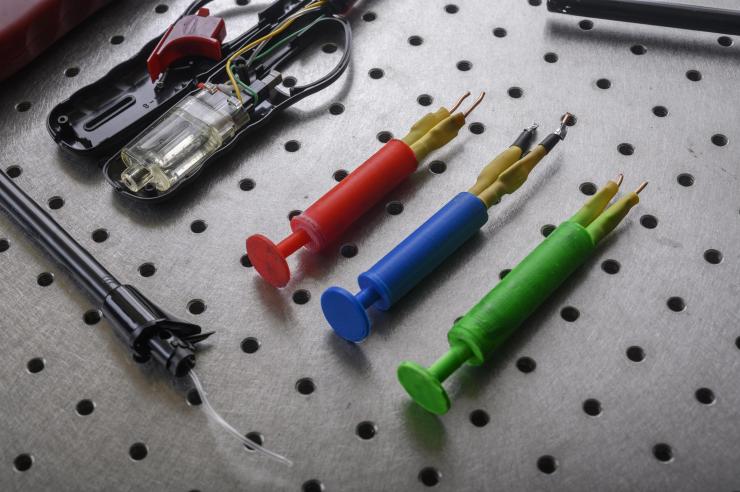Q&A with Georgia Tech Professors on the Intersection of Science Fiction and the Chemical Elements
Nov 04, 2019 — Atlanta, GA

Can you still recite the elements of the periodic table?
Throughout this year, Georgia Tech has celebrated the International Year of the Periodic Table with a variety of events, forums and activities to spotlight the significance of the periodic table and the chemical elements. For the past 150 years, the periodic table has been a foundational element in classroom learning, scientific innovations and the global imagination.
To close out the yearlong celebration, the College of Sciences, as well as the School of Literature, Media, and Communication, and the Georgia Tech Library will host the panel discussion “From Myth to Marvel: The Role of Elements in Science, Fiction and Culture.” It will be held from 11 a.m. to 12:15 p.m., November 7, in the Library.
Georgia Tech professors M.G. Finn and Deirdre Shoemaker are a part of the panel, which will explore how science and art have long influenced each other. We asked them to share their take on the astounding elements of the periodic table.
How relevant is the use of the periodic table 150 years later — in the classroom and in our everyday lives?
DS: I think our students need to understand the basics of matter, the building blocks. The elements influence sciences and engineering. We like to adorn ourselves in elements like gold and silver. Our universe is built from hydrogen and helium — at the heart of it all are elements.
Why do you think there has been such an emphasis on chemical elements among science fiction writers?
MGF: Science fiction creates alternate worlds or universes, but the elements are still what they have to be made from. Elements are fundamental in the deepest way — if you want to create something authentic, it helps to be familiar with the building blocks.
What are some creative ways you have used the periodic table in your work?
MGF: Many chemists, including me, look for elemental “analogies.” For example, a key insight of the periodic table is that elements in the same column have similar properties. They also have interesting differences. So, if we have a molecule made out of silicon, it is similar, but also tantalizingly different, from an analogous one made out of carbon. Sometimes, we can make medicines using this kind of similar-but-different trick, or new materials that improve on the properties of the old ones.
How has the periodic table affected your life?
MGF: I fell in love with the periodic table when I first started playing with matter in the chemistry laboratory. It was a necessary accompaniment — a framework — to seeing things combine to make new things. In time, I came to appreciate particular elements as having particular “personalities,” and, as a chemist, I can assign whatever expertise I may have to a deepening of that perception.
DS: The elements impact us constantly. We are built from the elements created in supernovae and colliding neutron stars. There is no us without elements.
The title of the panel discussion is “From Myth to Marvel.” Can you explain how the periodic table has influenced this transformation?
MGF: The most compelling creation of worlds in literature and film are those that connect in well-defined ways to the “real” world. And the most fundamental of those connections is to the elements that comprise the universe. I don’t think it’s an accident that vibranium is a Marvel creation.
DS: I do not know that the elements were ever a myth or a marvel. They do help us understand how humanity can start by making simple observations about the world around us and build up to understanding the universe using basic structures like the table of elements. For me, that is the true marvel.


Institute Communications




